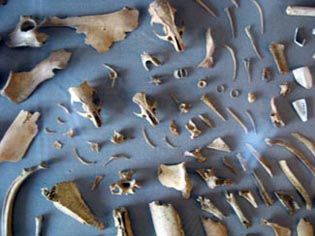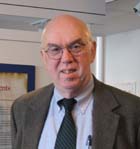 |
|||||
| Politics | Business | Schools | Justice | Health | Et Cetera |
By Kelly Wilson Originally it was nothing more than an adornment for the obituary entries in Jonas Green's Maryland Gazette newspaper. But when Green put the stamp on the front page of the paper's last issue before it closed in defiance of the British government's Stamp Act, the little skull and bones became a big symbol of American independence. After being buried in a pile of trash since the early 1800s, Green's stamp is now on display in the Banneker-Douglass Museum as part of an exhibit celebrating the 300th anniversary of the city's royal charter. The exhibit opens to the public Tuesday. "Seeking Liberty: Annapolis, an Imagined Community" came about at the suggestion of Mayor Ellen Moyer's office and was created in conjunction with Archaeology in Annapolis, part of the department of anthropology at the University of Maryland, College Park. "The goal of Charter 300 is to be able to tell the story of 300 years in this city," Moyer said. The exhibit includes hundreds of artifacts from five sites in Annapolis, some the products of 27 years of city excavations by the University of Maryland. Most of the objects on display are making their first appearance in public. "It symbolizes the quest of people in Annapolis and Maryland for greater freedom for themselves, thus the phrase 'seeking liberty,' " said Mark Leone, guest curator of the exhibit and director of Archaeology in Annapolis. Among the five sites in the exhibit is Green's home and print shop.
The objects are arranged to move visitors through the city's history, from the Lords Baltimore in the 1800s to a home built by a free African-American and owned by his family into the 20th century. Each site is carefully constructed to show not only the path of European history on the continent, but also the lives of African-Americans. Displays early in the exhibit represent African history largely through cooking tools and other implements they used in their lives as slaves. Gradually, little items like buttons, bottles and glass are introduced as part of the exhibit. To their owners, though, these trinkets were significant. Among the tiniest on display is a Hand of Fatima, or Hamsa, used as a talisman for protection, and still found today in both Muslim and Jewish cultures. In the Brice House, sets of such small artifacts stretched across several rooms when they were found. The display shows a model of the area where archaeologists discovered several caches of everyday objects under the floor in what some believe is a spiritually significant semicircle. These are the usual fare of coins and other common items but their arrangement suggests a more important use, said Amelia Chisholm, laboratory director for Archaeology in Annapolis at the University of Maryland. Their locations appear to have been specially chosen to center on the most frequently traversed parts of the kitchen and the laundry room, where servants would have spent most of their time, Chisholm said. That placement was thought to bring protection and healing.
The positioning of the semicircles also forms the shape of a cross inscribed in an oval, a representation of the universe in some West African spiritual practices. "And so what we think was happening here was that someone was not just placing a single grouping of objects to manage the spirits, but actually turning the entire two rooms into this cosmogram as a representation of the universe," Chisholm said. The Maynard-Burgess House display shows how by the mid-1800s the concept of liberty found its way to African-Americans through everyday groceries, such as cans and jars from popular national brand names like Heinz. That consumerism was both an expression of African-Americans' new freedom and a result of the racism of the time. For whites, the best shopping choice was a local vendor, but African-American families were likely to face higher costs unless they chose products with nationally set prices, said Chisholm. The exhibit is scheduled to remain in the museum's temporary gallery until Nov. 29. The Banneker-Douglass Museum is located at 84 Franklin St. in Annapolis. "Once this is up and running we're going to have actual smaller exhibits at each of these properties with some more artifacts and additional text panels," Chisholm said. A walking tour will lead visitors to the sites and allow them to use their cell phones to hear descriptions of the displays at each spot. |
||||||||||||
|
Copyright © 2008 University of Maryland Philip Merrill College of Journalism | ||||||||||||
| Politics | Business | Schools | Justice | Health | Et Cetera | |||||||


